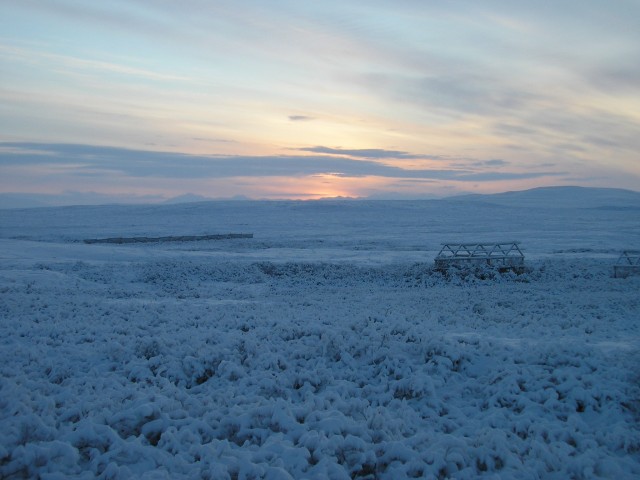
Although the climate changes that are being driven by human carbon emissions are likely to cause serious disruptions on their own, one of the additional worries is that the initial warming will set off events that keep changing the planet even if humanity gets its carbon emissions under control. So, for example, warming the oceans could heat up the clathrates that exist there, releasing methane that greatly enhances the greenhouse warming.
The other place that scientists have been watching nervously is the Arctic. About half the carbon stored in the Earth's soil is in the Arctic, where it's locked in place by permafrost and low metabolic activity caused by the cold. As those regions melt, the worry is that bacteria in the soil will start feeding on the carbon trapped there, releasing it into the atmosphere as CO2 that causes further warming.
A new study that looks at 20 years of changes in Alaska, however, suggests that this won't necessarily take place. In the area being studied, the warming temperatures rearranged the ecosystem and redistributed the carbon. But, in the end, there was just as much carbon stored in the soil. What needs to be determined now is just how well this experience will translate to other areas of the Arctic.
To study the impact of the greenhouse effect, scientists set up an actual greenhouse above some tundra in Alaska. Although that works through a completely different mechanism, it has the same sort of effect, warming the soil below it. The greenhouse was put in place back in 1989, and the researchers have spent the decades since tracking the changes that happen in the soil beneath it.
As had been seen at other sites, the warming promoted the growth of woody shrubs—cover rose by a hefty 94 percent. These lead to further warming of the soil by trapping snow in the winter; the snow then acts as an insulator, keeping things warmer than they would be otherwise. However, the researchers found that there was also a short-term summer time warming that persisted for several years as the shrubs were growing.
The plants ended up proliferating at the expense of mosses and lichens, both of which decline precipitously (lichens effectively vanished, with their presence dropping by 99 percent). That shifted the dynamics of the microbial ecosystem in the surface soils. Dead needles from the shrubs break down far more readily than mosses, which increased the speed at which carbon was turned over in the soil. That added warmth also increased the activity of bacteria in the soil, accelerating the decomposition further. The net result was that less carbon ended up stored in the surface soils.
All of that would suggest that initial worries were well founded. But something else happened as a result of the shift to shrubs: root systems began to penetrate far deeper into the soil, and reached depths below the areas that were typically rich in organic matter. And, as the roots penetrated, an ecosystem followed, living off dead roots and organic material that leached from living ones. These microbes eventually attracted more creatures that fed on them, eventually resulting in a significant carbon-based system well below the surface layers.
All told, this deep carbon, combined with the increased storage in the form of shrubs, offset the loss from the surface. The change, in effect, was carbon neutral.
The big remaining question is whether this sort of effect is general. Different shrubs may take over in other regions of the Arctic, and there are some areas that may be perpetually inhospitable to these plants. Nevertheless, if this sort of behavior holds up, then we might be able to breathe a bit easier about the future fate of the Arctic's carbon.
Nature, 2013. DOI: 10.1038/nature12129 (About DOIs).
reader comments
49